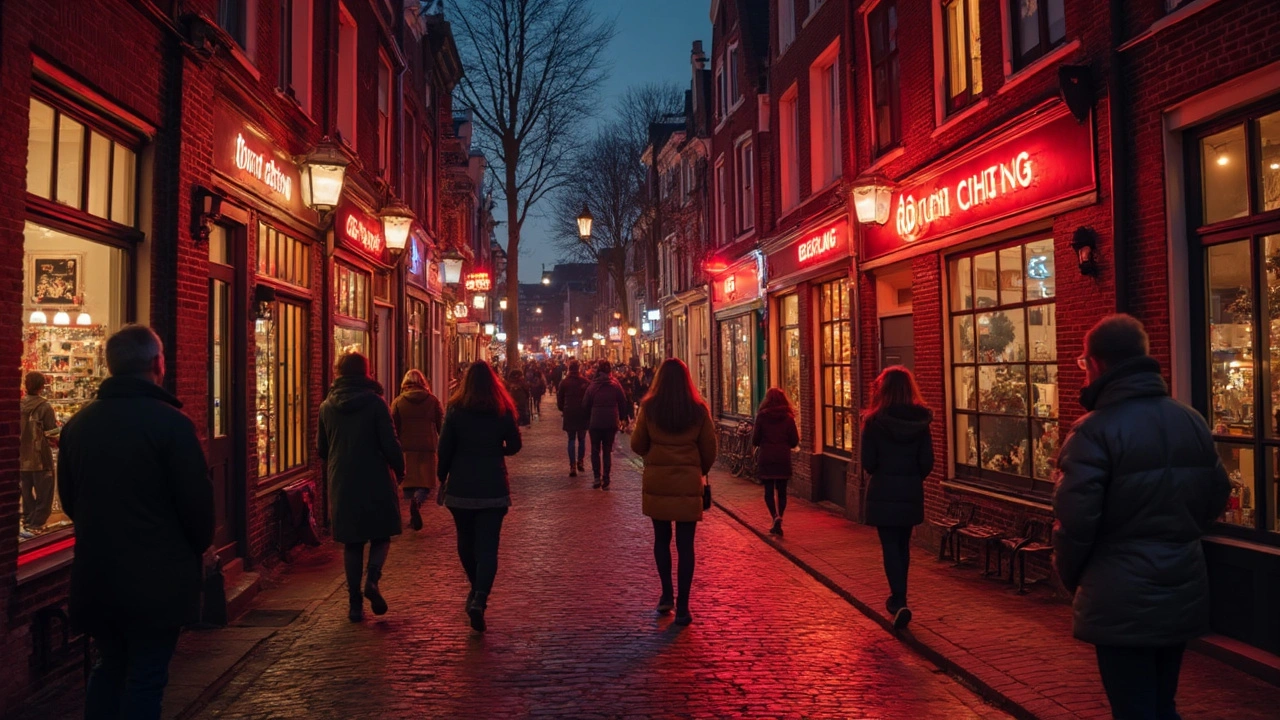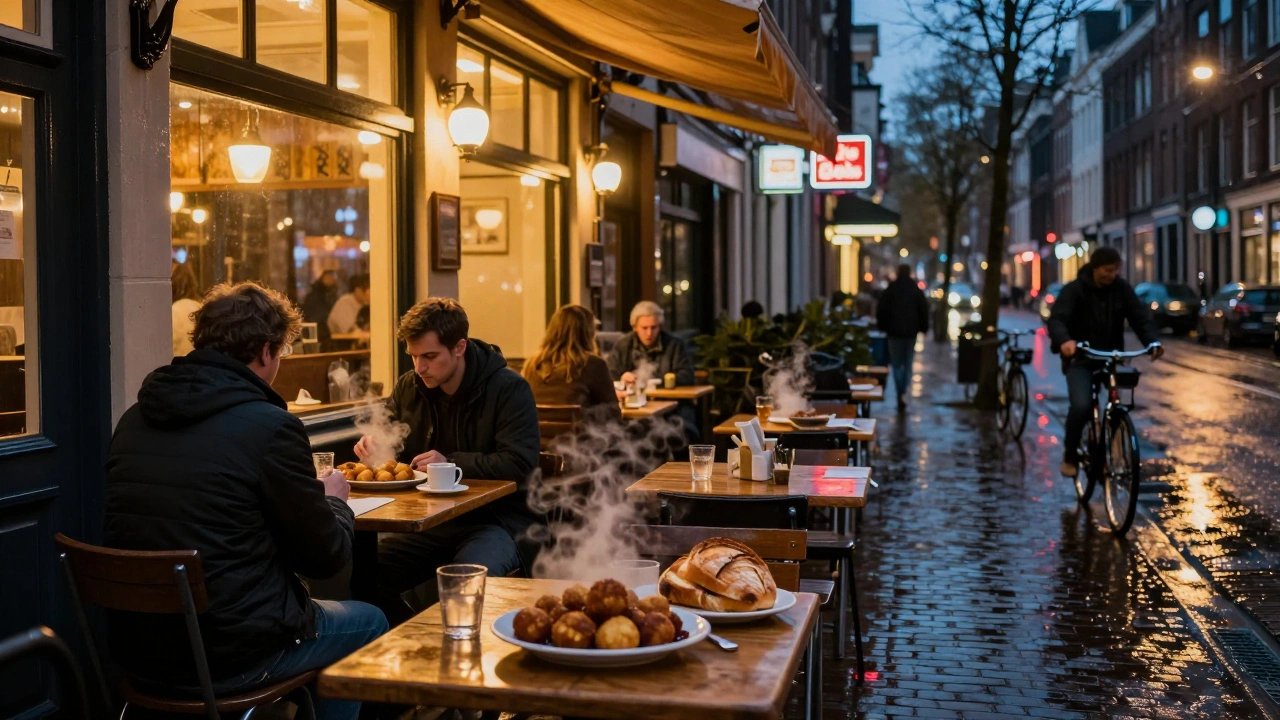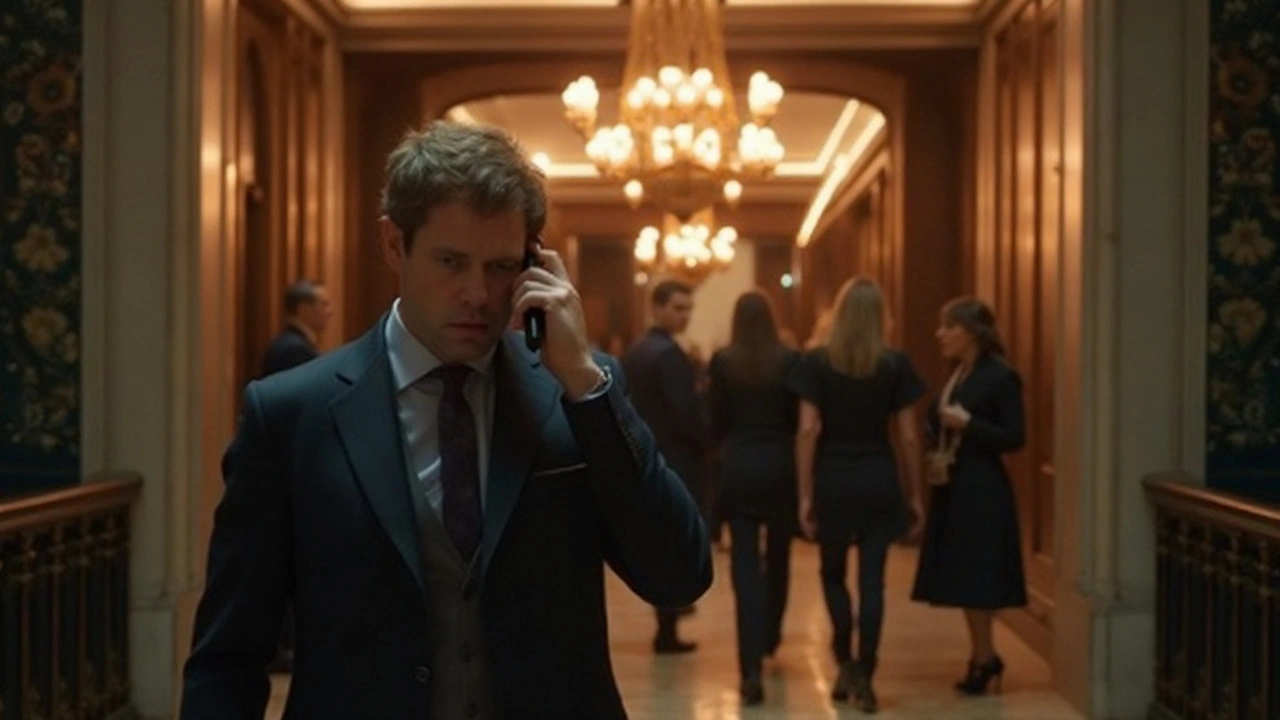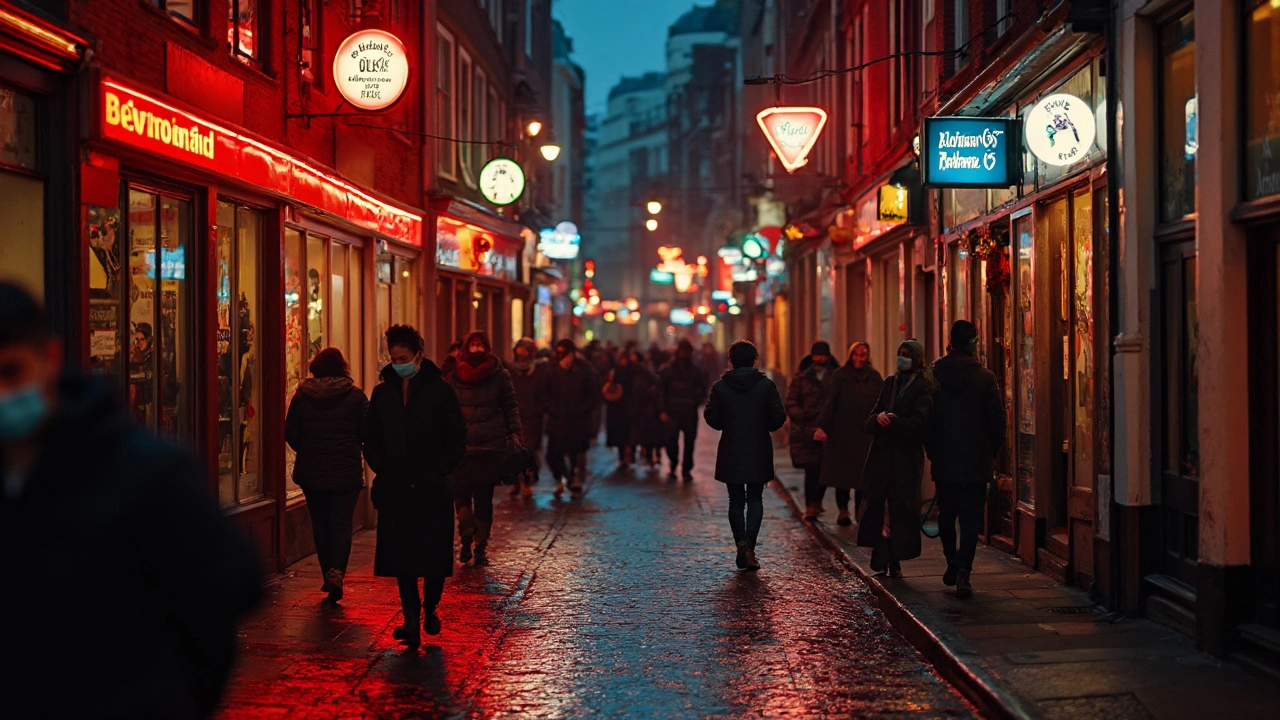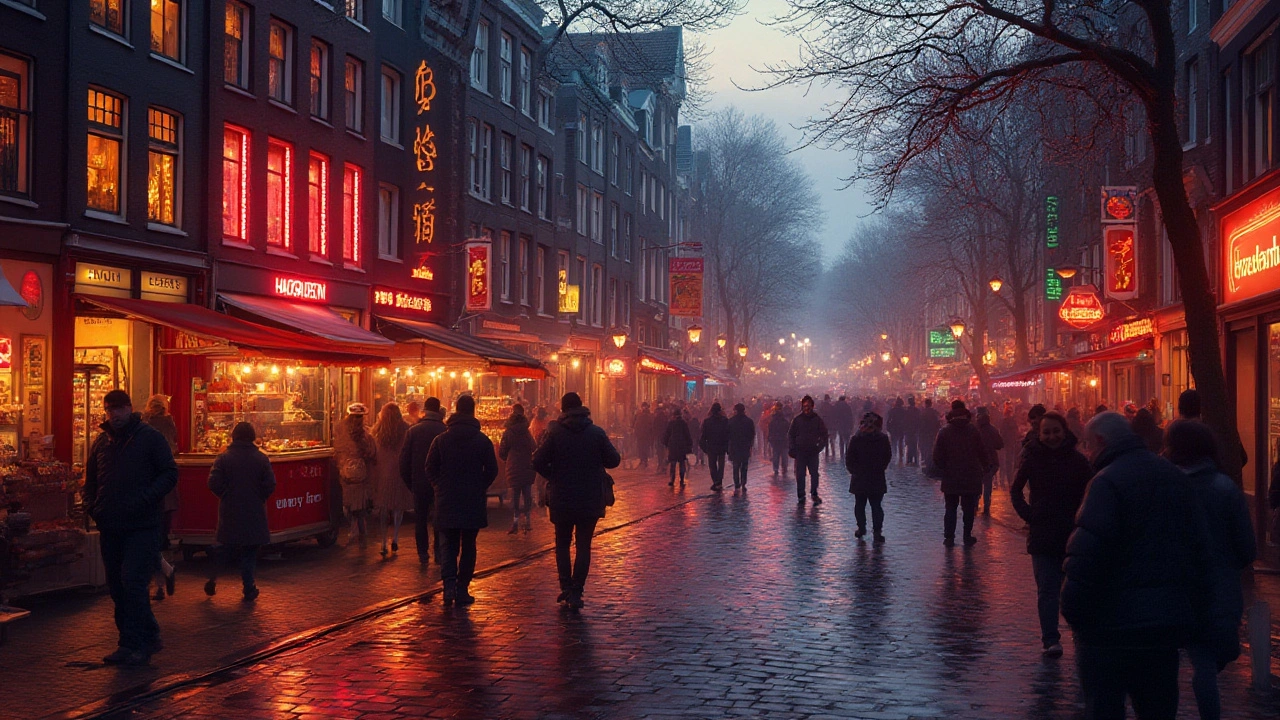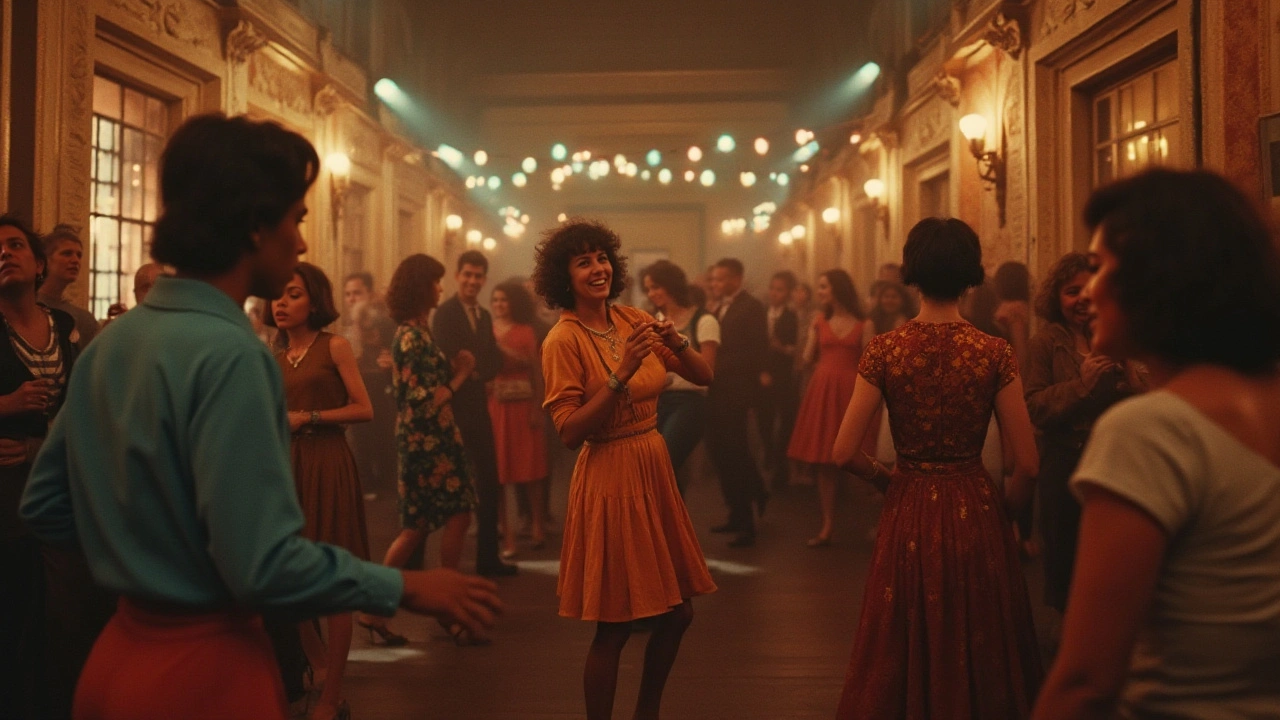
In the heart of vibrant Amsterdam, where the architecture sings a symphony of history and the canals flow with stories untold, dance parties have become an unwavering beacon of cultural expression. A journey through time reveals how these gatherings evolved from modest social activities into grand festivals that light up the night with music, movement, and a palpable sense of freedom. It's a city where the rhythm of life finds its dance, celebrating the confluence of tradition and innovation.
As shadows dance upon the cobblestone streets and the air hums with anticipation, Amsterdam's reputation for nightlife has flourished, creating a dance culture deeply rooted in history yet continually breaking new ground. Whether tucked within clandestine club scenes or sprawling across the renowned festival landscapes, the city's dance parties encapsulate the essence of communal bliss.
- Origins of Dance Parties
- Amsterdam’s Influence on Nightlife
- Cultural Dynamics and Social Movements
- Iconic Dance Venues in Amsterdam
- The Evolution of Dance Styles
- Future Trends in Dance Parties
Origins of Dance Parties
With each beat of the drum in the ancient rhythms of the past, the dance party began its intricate dance through history. It was not always the glitzy spectacle of lights and sound that we know today, but something more sacred and deeply rooted in the rituals of old. In many ancient cultures, dance was closely tied to spiritual ceremonies and communal gatherings, where individuals thrummed to the primal beats of nature itself. As the firelight flickered in the dim night, bodies moved in spellbinding harmony, weaving stories of gods and mortals, love and loss, right into the earth's living tapestry.
In the medieval courts of Europe, dances evolved to become extravagant affairs that signified not just merriment but social prowess. These gatherings were not merely opportunities for revelry—they were occasions to forge alliances and display one's standing within the court. The grandiose halls of castles echoed with the delicate strains of lutes and harps as courtesans twirled in splendid attire, each step a whispered promise veiled in tradition and allure. The notion of a dance party slowly unfolded its wings to embrace both the opulence of the aristocracy and the eternal wonder of shared experience.
Fast forward to the jazz clubs of the early 20th century, where the infectious energy of the era transformed nightlife. These venues became cradles of liberation, where individuals could escape from societal constraints. Under the sultry glow of chandeliers, bodies swayed and shimmied to the melodic notes that seemed to defy paths yet tread. The speakeasies were emblems of ecstatic rebellion, a testament to the growing influence of cultural dynamics within the dance. With music as their muse, people found a profound connection that transcended the spoken word.
As the shadow of war cast a pall across the globe, dance parties took on a subdued yet significant mantle. The 1940s Swing Era emerged like a phoenix from the ashes, where GIs and their sweethearts found solace in the embrace of dance floors across the world. In the midst of turmoil, these dances stood as sanctuaries of joy and resilience, an intimate whisper in the ear of humanity that life must be celebrated, come what may. The very fabric of these movements was woven from the longing for peace and unity across boundaries imposed by the chaos of war.
Today, as we traverse the kaleidoscopic lights of modern dance floors, the legacy of those early gatherings pulsates through the air. Places like Amsterdam have cemented their place in the annals of dance history, fostering an exuberant scene that echoes with the influences of its past. As the grooves of humanity twist and turn, the city remains a beacon where cultural exchange and expression meet. Dance parties, now unshackled from tradition, embrace an ethos of inclusivity and diversity, offering spaces where souls intermingle in their quest for rhythm and release.
Amsterdam’s Influence on Nightlife
As the dusk settles over Amsterdam, its labyrinthine streets and enchanting waterways morph into a pulsating playground of nightlife that is unmatched by any other European city. The rich tapestry of dance, sound, and light becomes a siren's call, beckoning enthusiasts into a mesmerizing world where every moment is steeped in a bewitching blend of tradition and modernity. Amsterdam’s influence on nightlife stems from its historical openness and spirited embrace of diversity. This beautiful city, with its multicultural populace, lends a uniquely transformative energy to its dance parties, where travelers from every corner of the globe blend seamlessly with the exuberantly expressive Dutch.
The symphony begins with an unfurling of sensory joys: the heady aroma of exotic spices from bustling street vendors, the rhythmic beat that reverberates through the bones from hidden underground clubs. The Paradox of Amsterdam is its uncanny ability to balance raucous wildness with a deeply ingrained sense of respect and harmony. This dichotomy is mirrored in its rich nightlife culture, with iconic venues like Paradiso and Melkweg, where concerts and dance nights are layered with meaning and history, echoing their hippie roots from the 1960s. Amsterdam dance parties are more than improbable gatherings of kinetic energy; they are forums for creative self-expression and societal discourse.
Beyond the hypnotic allure of each thumping beat, there is an intrinsic philosophy that permeates Amsterdam's nightlife. The Dutch “gezelligheid” finds its way into these gatherings — a cozy, convivial atmosphere where every person feels part of a grander narrative. This concept extends to marquee events like Amsterdam Dance Event (ADE), a sprawling festival that transforms the entire city into an electric epicenter as over 400,000 attendees plunge into a hedonistic parade of sight and sound. As one reveler eloquently put it, “There's a magic to Amsterdam's dance parties, a boundaryless space where the underground and mainstream dance in perfect synchrony.” And while traditional windmills stand still in the daylight, the night’s carnival-like momentum is always in flux, evolving with the cultural undercurrents of the day.
The careful curation of soundscapes is not isolated to EDM alone. Jazz, blues, and world music find their haven within intimate jazz clubs and elegant concert halls. Amsterdam's nightscape is a mosaic of experiences attuned to diverse palates — a hallmark of its wide-ranging influence. Indeed, cultural phenomenon seamlessly integrates with the Dutch penchant for innovation. Tourists and residents alike dance the night away, cloaked in the shimmering tapestry of strobe and stage lights, delighting in the juxtaposition of the new and the familiar, as the city spins tales both unbridled and profoundly grounding.
“In Amsterdam, nightlife is not just an escape; it is an exploration of identity, an affirmation of freedom,” mused noted cultural historian, Dr. Sylvia Van Geer, who has chronicled the city’s evolution through each decadent decade.
As Amsterdam continues to lead the charge with its global impact on the nightlife scene, its ethos of inclusion and dynamic transformation ensures its place at the forefront of Dutch traditions. The love affair between the city and its revelers only deepens over time, as the gleam of the canals confers a sacred vow to return again to dance beneath the storied skies. This irresistible allure, rich with cultural undertones, ensures that long after the last melodies have faded, the memories linger like starry echoes. Indeed, in Amsterdam, the night is eternally young, and its influence on nightlife seems destined for endless reinvention.
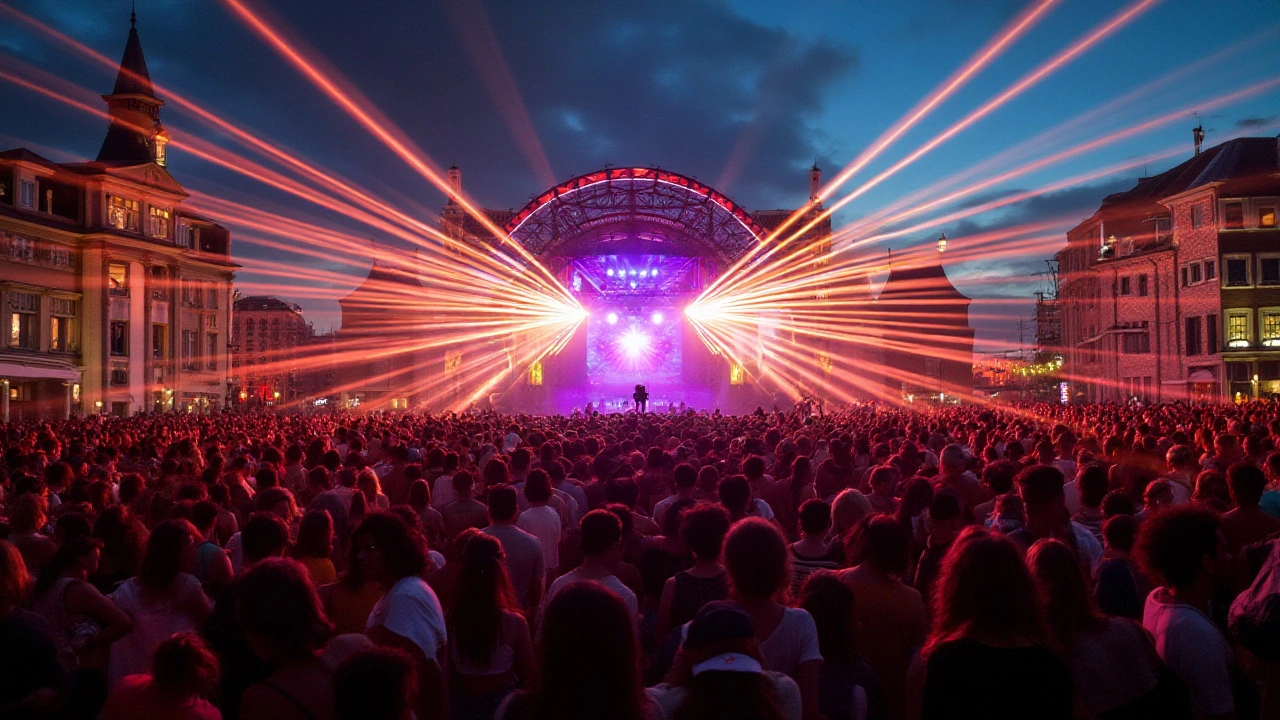
Cultural Dynamics and Social Movements
Amidst the beguiling charm of Amsterdam's storied avenues, where history and modernity play an eternal dance, the cultural tapestry of the city reveals itself in the pulsating art form of dance parties. The allure of these gatherings is woven intricately with an array of cultural dynamics, each thread representing a different era, a silent revolution, or a subtle challenge to societal norms. Within this seductive dance of cultures, Amsterdam's neighborhoods ripple like the canals they're famed for, echoing the rhythm of an ever-evolving society.
The city has consistently embraced the new and the daring, a trait evidenced robustly within its dynamic nightlife. The 1960s saw dance parties intersect with the counter-cultural movements, forming a bridge for communities alienated by traditional social structures. These were not just parties but fora for expression, spaces where social barriers dissolved in the swirling of skirts and hypnotic beats. As the decades rolled forward, the LGBTQ+ movement found in Amsterdam's dance floors a sanctuary—unapologetic and raw. Clubs that once echoed the classical steps now resonated with vibrant electronic music, their evolution nudged forward by these socio-cultural currents. This shift was not just about the music but a metamorphosis in attitudes and acceptance, symbolic as much as it was sonic.
The celebrated anthropologist, Gilbert Allen, once noted that "a city's essence is as much defined by its rituals of expression as it is by its structure." Dance parties, Allen argued, offer a visceral opportunity for spontaneous social interaction.
The city's internationally renowned dance festivals, such as Amsterdam Dance Event, channel these ripples of change into colossal waves, drawing enthusiasts and performers from across the globe. These gatherings are a testament to the power of dance to unite disparate walks of life, rekindling the primal urge to move together as one. Icons like Paradiso and Melkweg have become more than venues; they're epicenters where cultural waves transform into tidal dances, each beat a whisper of shared purpose and joy.
The role of cultural dynamics in these undertakings cannot be understated. Each dance movement that has graced the city's venues carries the signature of broader social movements—modern venues give nods to the rapidly changing Dutch social landscape. If we were to consider an evening in one of Amsterdam’s premier clubs, a rich tapestry of mingling individuals presents itself: the isolated beatnik, the flamboyant vogue dancer, the introspective tripper—all moving to a common rhythm. In this shared space, the tension between individuality and the collective breaks down, creating a space that's intensely personal yet fundamentally communal.
This cultural composite speaks to Amsterdam's broader ethos—a haven for dialogue, freedom, and exploration through the language of dance. With every sway and twirl, a story unfolds as intricate as the city's labyrinthine streets, reverberating ties across continents and generations. It is within these dance parties that the city’s core can be felt, a throbbing testament to the power of people coming together, not despite their differences but because of them—a song of humanity, resonant and unstoppable.
Iconic Dance Venues in Amsterdam
Amsterdam is a city pulsating with nightlife energy, where each street and alley seems to hum with the promise of music and movement. Among its labyrinthine beauty lie several Amsterdam dance parties that have carved their names into the annals of cultural history. Dance venues here have a peculiar alchemy, blending old-world charm with modern vibrancy, creating unforgettable sensory symphonies. A prominent name on this entrancing list is Paradiso, a former church reborn as a pulsating temple of music. With its captivating high arches and stained glass of vivid hues, Paradiso casts an intimate spell over its visitors, drawing them into its ethereal embrace. Inside, the sounds range from pulsating techno to seductive jazz, as each note reverberates off ancient walls, spinning tales of Amsterdam’s entertainment evolution.
"In Amsterdam’s dance scene, Paradiso reigns as a sanctuary where the past meets the present, a true marvel of repurposed elegance." - Dutch Dance Music Authority
And then there is Melkweg, the Milky Way, whose name alone hints at the cosmic journeys it offers its guests. This former dairy factory, now a cultural mecca, stands as a testament to Amsterdam's knack for reinvention. Melkweg's intricate acoustics guide rhythms like a conductor sways an orchestra, each beat a star in its own right. As dancers surrender to the magnetic grooves, one can feel the weight of time itself dissolve in a dancefloor baptism. From electronic dance music to world-renowned rock acts, the versatility of Melkweg's performances ensures no two nights are ever the same, yet each leaves an indelible imprint on those who grace its floors.
For a taste of unique Dutch tradition, Club AIR represents the cutting edge of innovation in Amsterdam’s club scene. AIR is famed for its progressive approach, balancing pyrotechnic visual artistry with impeccably curated electronic music. Stepping inside, one is enveloped in an electric ambience, almost tangible as the bass sends delightful shivers throughout the body. It’s a space where artists and dancers coalesce, fostering a community that thrives on creativity and connection, with the city itself a key part of its living, breathing organism. As the blurs of neon color paint exotic patterns against its walls, patrons feel not just witnesses to the art, but woven threads in its very creation.
These remarkable venues form the bedrock of what makes Amsterdam’s nightlife truly extraordinary. Each, in its way, tells the collective story of Amsterdam and its stirring relationship with dance culture. They invite you to lose yourself to the night, to find magic in the music, and to dance with abandon on floors that have borne witness to decades of joy, freedom, and the constant dance of cultural evolution. As Amsterdam continues to embrace and redefine its nocturnal identity, these spaces promise to remain sacred cornerstones for generations of dance lovers yet to come.
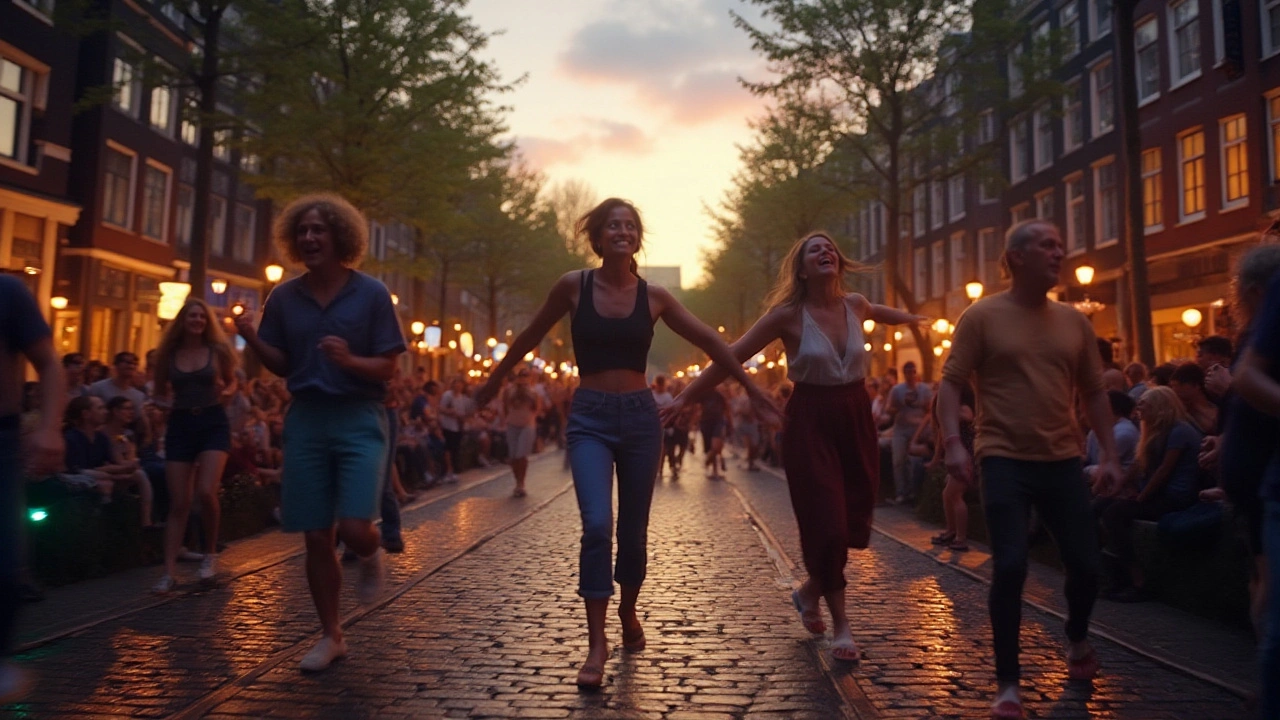
The Evolution of Dance Styles
Amidst the pulsating heart of Amsterdam's nighttime canvas, dance styles have matured, evolving into a myriad of captivating expressions that reverberate through time. Dance, an age-old form of artistry, captures the soul's essence through movements that speak louder than words. In Amsterdam, a city always at the forefront of cultural currents, each dance style tells a unique story. From the early bohemian gatherings where free-spirited souls found sanctuary, the progression into a realm dominated by modern dance styles has been nothing short of a dance renaissance.
The city's dance repertoire reflects societal dynamics, embodying shifts in social consciousness. Traditional dances, once the staple of Dutch culture, have threaded their way into modern narratives, morphing alongside electro beats that define Amsterdam's nightlife today. Such evolution is not accidental; it embraces a blend of cultural influences that seeped in through Amsterdam's ports, bringing with them the rhythms of Africa, Asia, and the Americas. This melting pot fostered an environment where creativity thrived, and conventions dared to be challenged.
In Amsterdam, venues like Paradiso and Melkweg are not just clubs; they are sanctuaries of sonic exploration where dance styles collide and coexist. They witness movements ranging from hip-hop's defiant staccato to the flowing grace of contemporary dance. Each dance step cultivates a narrative where the city acts as the backdrop to the ever-evolving story of human expression. With every beat drop, the relationship between dancer and music becomes a seductive interplay of rhythm and freedom—a romance that leaves its audience in awe.
"Dance is the hidden language of the soul," renowned choreographer Martha Graham once mused, capturing the ineffable connection that elevates movement into storytelling.
This dance journey in Amsterdam also charts the city's resistance and adaptability. Dance has been a form of protest, a reclaiming of voice amidst societal shifts. Notable during the post-war era, dance gatherings in Amsterdam became a form of silent rebellion—an act of defiance against oppression and a celebration of newfound liberation. The rigid societal norms were questioned on the dance floor, movements speaking volumes as silhouettes swayed to an otherwise unheard freedom.
The future of dance styles in Amsterdam promises even more diversity, as technology continues to play a pivotal role in shaping experiences. Virtual reality dance parties and AI-generated music compositions ensure that Amsterdam remains a bastion of innovation in dance. As each era begets new trends, Amsterdam's indelible charm ensures the tale of dance remains ever captivating, evolving yet holding onto the timeless allure that makes the city an eternal muse.
Future Trends in Dance Parties
Amidst the echoes of beats reverberating through Amsterdam's historic alleyways, the future of dance parties dances like a love affair with time itself. The very fabric of these gatherings is woven with a sensual vibrancy, always enticing, always evolving. As the city that ceaselessly marries tradition with modernity, Amsterdam is poised on the brink of an exciting metamorphosis in the realm of dance. The fusion of technology with the pulsating heart of human interaction is shaping tomorrow's dance floor, reframing how space, sound, and light interact in an ever-intensifying dance of their own.
One emerging pattern is the integration of virtual reality into dance parties, crafting mesmerizing landscapes where imagination blurs with reality. Attendees might soon find themselves entwined in a digital tapestry, their senses seduced by alternate worlds where the boundaries of the dance floor extend to infinity. Amsterdam dance parties, renowned for their cutting-edge experience, are likely to be at the forefront of this technological infusion, offering both locals and tourists an unprecedented neural delight.
Simultaneously, a movement towards sustainability is captivating the city's nightlife. As eco-consciousness grows, dance party organizers are embracing renewable energy sources, reducing waste, and implementing zero-carbon practices. The city leads the way, balancing hedonistic pursuits with thoughtful consideration for the planet. The inherent synergy between exuberance and responsibility is undoubtedly a key trend propelling Amsterdam's dance scene into the future.
Another captivating evolution is the personalization of the dance experience. Picture a setting where wearable technology syncs with one's rhythm, adapting the music, lighting, and ambiance to individual preferences. Such innovations promise to transform the communal space into a finely tuned theater of personalization, adding layers of intimacy to the shared human experience. As one reveler famously noted in a report by the Cultural Think Tank, "The most exhilarating dance reflects the rhythm of one's soul."
Nightlife aficionados are likely to witness hybrid events that merge various art forms. Dance parties become a crucible where performance art, interactive installations, and music converge, challenging conventional viewpoints and amalgamating into a single immersive spectacle. Artistry, when layered with dance, invites a richer participation from attendees, allowing them to become creators in their own right, shifting from passive observers to active collaborators.
Heralding a New Dawn: Cultural Melting Pot
These future trends are not isolated phenomena but rather an intricate reflection of Amsterdam's cultural ethos. The city, known for its spirit of inclusivity and cross-cultural exchanges, remains a beacon for diversity in dance parties. Here, the kaleidoscope of global influences crafts a unique narrative, inviting dancers to partake in a ritual that is as enchanting as the city itself. This evolution, steeped in a seduction of the senses and a celebration of cultural fusion, promises to shape the dance parties of tomorrow, making them as diverse and compelling as Amsterdam itself.

